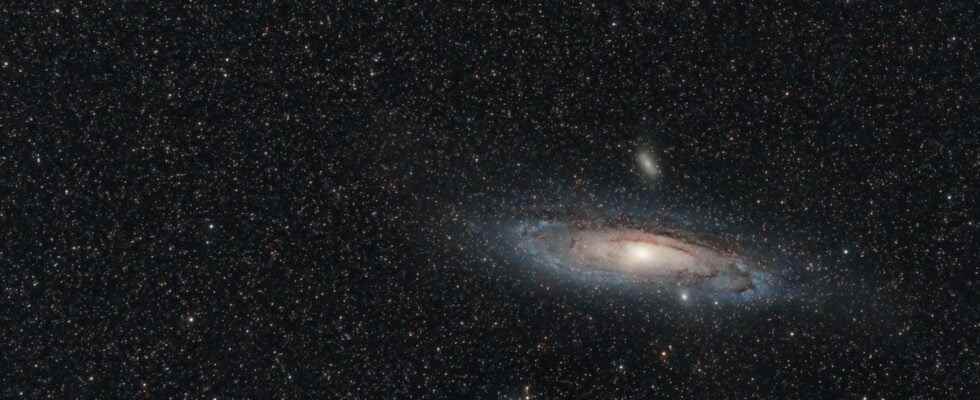The most beautiful discoveries are sometimes made… right next to home. For this time, in the Andromeda galaxy, the spiral galaxy closest to ours. Astronomers have just found an intermediate-sized black hole there.
You will also be interested
[EN VIDÉO] Discovery of the closest black hole to Earth From the observation of a triple system, a team of astronomers accidentally discovered the existence of a small black hole. Located just 1,000 light-years from Earth, it is the closest black hole ever detected and poses no danger to Earth.
In the family of black holes, there are supermassive black holes. Those found lurking in the hearts of galaxies. Real monsters whose mass can exceed several billion times that of our Sun. There are also the stellar black holes. which are born fromcollapse of one star. These have a mass of about ten solar masses. And smaller than the first, but bigger than the second, there are the aptly named intermediate black holes.
Even though their mass can reach several thousand times that of our Sun, these remain very difficult to find. But today, University of Utah researchers (United States) announce that they have found one of them. In a galaxy very close to ours, the andromeda galaxy (M31), also a spiral galaxy, located only 2.55 million light-years from our Solar system. Hidden in what astronomers have long taken for a globular cluster. A star cluster named B023-G078.
The only time B023-G078 was observed, the researchers were able to determine its overall mass. About 6.2 million solar masses. Nothing abnormal. But still making it one of the most massive objects in the andromeda galaxy. One of the reasons why some considered him the perfect candidate for “stripped core”. Understand that some astronomers saw in B023-G078, not a globular cluster, but what remains of a dwarf galaxy devoured by Andromeda and which would have, over time, lost its peripheral stars.
others “stripped cores” to study
“We knew that there must be, in this type of object, black holes of intermediate mass. But we had no direct proof of that.says Renuka Pechetti, lead author of the study, in a statement from the university of utah. And today, thanks to data collected by the Gemini observatory and with the space telescope Hubble, the researchers were able, by modeling its light profile, to calculate the mass distribution of the mysterious object.
While the shape of the light profiles of the globular clusters is the same in the center and on the periphery, that of B023-G078 flattens on the exteriors. The chemical composition of stars also changes. In the center of B023-G078, astronomers found stars richer in heavy elements. A structure “more complicated” characteristic of a “stripped core” which is formed in several episodes.
And it is ultimately by trying to predict the speed at which stars should move in the ex-dwarf galaxy that astronomers have confirmed the presence of a black hole intermediate. The only way to match model and observational data. “The stellar velocities we’re getting give us direct evidence that there’s some kind of dark mass right in the center of this object.”, confirms Renuka Pechetti. A black hole necessarily of intermediate mass — of the order of 100,000 solar masses. As might therefore exist in other “stripped cores”.
Interested in what you just read?
